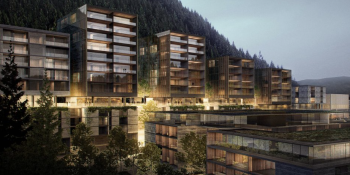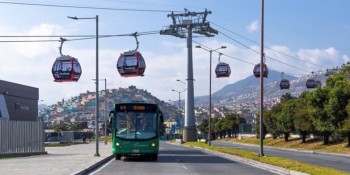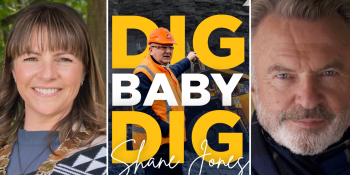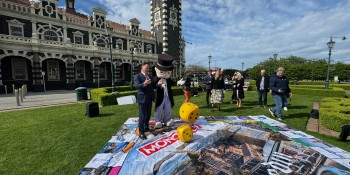Questions, concerns raised over Ridgeburn Fast Track proposal

No one saw it coming.
When the Ridgeburn housing development materialised on the Government’s Fast Track website in May/June this year, Morven Ferry Rd residents were blissfully unaware that peace in their bucolic idyll could soon be disturbed.
The land is zoned Rural General, and it’s not earmarked for development in Queenstown Lakes District Council’s long term or spatial plans, so why would they have any inkling that a large-scale housing project could ever encroach on the landscape?
In addition, QLDC’s Housing and Business Assessment, adopted at the previous council’s final meeting on October 10, acknowledges there is already “a substantial amount of plan-enabled housing capacity available across the short, medium, and long term”.
Admittedly, the assessment says, “there is a district-wide shortfall of dwellings in the short term, due to infrastructure capacity limitations in the Whakatipu Ward, resulting in a ward shortfall of 1200 dwellings”.
However, in both the medium and long term, the assessment’s modelling reveals a surplus of land assigned by QLDC for prospective housing developments.
The assessment concludes, “Queenstown Lakes District is generally well-positioned to meet projected housing and business land demand over the medium term, supported by recent planning and infrastructure initiatives”.
Mayor John Glover won’t comment on the merits, or otherwise, of Ridgeburn but does point out the proposal is at odds with QLDC’s planning initiatives.
“I don’t have a personal or organisational opinion on the Ridgeburn proposal at this stage but note it is not in a location that has that activity anticipated in either our long term or spatial plans, which are our only planning documents that have been worked up through detailed community consultation over the years.”
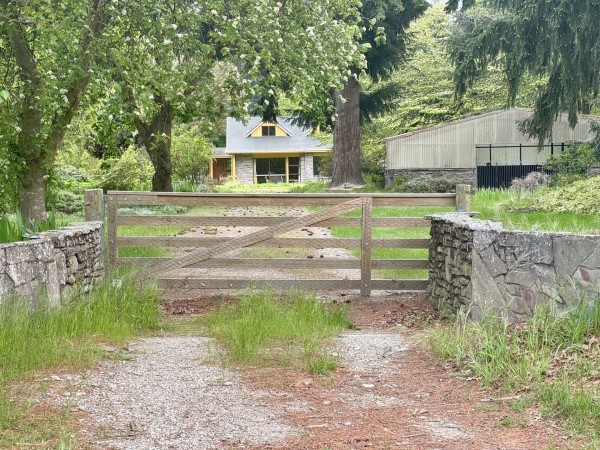
- The original farmhouse at Morven Ferry Rd.
Newly elected Councillor Samuel “Q” Belk’s unambiguous observations help put Glover’s comments into context.
“I am quite new to council but what is clear to me as a newbie is that an enormous amount of effort and thought goes into the long term plan, which is continuously updated. Fast Track overrides that process in favour of the developer.”
We asked councillor Niki Gladding how the district would accommodate a satellite town of this scale.
“Short answer – I don’t know. We have a lot of land zoned or consented for development and more in the RMA pipeline. If this is consented on top of that, it’s going to create real problems – particularly for the transport network. Given this development is considered ‘regionally or nationally significant’, I think the Government would need to back that assessment and commit (via NZTA) to funding the solutions – in time for development.”
Apart from the immediate economic benefits of construction, or building, of Ridgeburn, the details of regional and national significance have still to be clearly defined.
The Fast Track Process is the new kid on the block. Mayor Glover says he’s been working with staff to ensure all councillors have a good overview of how the fast track process works and at what point/s staff or councillors may be involved in the process.
“Bearing in mind that the process is EPA [Environmental Protection Authority] led and pretty much designed to preclude public consultation.”
The prospective construction of approximately 1250 homes, complete with commercial precinct and worker accommodation, has been meet with disbelief in Morven Ferry.
GibbonsCo, the development company, didn’t consult existing residents before submitting an application for what is, effectively, a small town.
Residents were enlightened via the community grapevine.
It was by chance that Kaye Eden first heard of Ridgeburn. She was out for a day with her horse.
“I was with a group of 12 people, all horse riding high in the hills behind Bendigo and at lunch time one of the group, a town planner, asked me what I thought of the Fast Track proposal near me.”
Eden, oblivious to the proposal, was taken aback and on returning to Morven Ferry searched the Fast Track website.
“I realised the extent of it, and how much it would impact the Arrowtown area in so many ways. I was also saddened that it doesn’t keep its name, Doonholme Farm.”
Eden felt compelled to inform those she felt would be interested, however her efforts were thwarted. “I decided to put it up on the Arrowtown Facebook page, asking if anyone was aware of it, but the post was removed an hour later.”

- In Hanna Pettit's view, the development would cause problems.
Hanna Pettit recently returned to her former rural lifestyle having lived in Auckland where traffic congestion impacted too greatly on her family’s life.
Morven Ferry Rd is a quiet, four-metre-wide, country lane where oncoming cars take care when passing, avoiding families of quail who wander along the bitumen surface.
As with Kaye Eden, it was from a town planner that Pettit first learned of Ridgeburn. She was, however, in Auckland visiting family, and it took time to fully grasp the enormity of what she’d been told.
“I can understand the Government wanting to Fast Track certain projects that have national economic benefits that fall outside the normal RMA process like a tourist gondola, or a gold mine. What I fail to understand is why this process can be used for normal bread and butter decisions that every council should be allowed to make, based on their own District Plan.”
Pettit didn’t take long to assemble reasons why Ridgeburn doesn’t make any sense. In her view it would create problems.
“My observations are as follows:
- The area is zoned Rural General, which has a minimum 200 acre subdivision requirement.
- All sewerage to be disposed to the surrounding land.
- Its own water scheme that feeds off an aquifer that supplies existing rural landowners.
- Arrow Junction Rd is a busy cycling route for locals/tourists heading to Gibbston.
- The area is over 10km from Frankton and has no access to public transport (nearest stop 3km away and inaccessible by foot)
- It feeds onto the busy overloaded State Highway 6.
- It will push more traffic towards Ladies Mile and the two lane Shotover Bridge.
- Said to be providing affordable homes yet the majority of those will be one bedroom units.
- QLDC has the Urban Intensification Plan Change in process that addresses additional housing in appropriate areas
“As I see it, this is purely for the benefit of one rich list developer who wants to bypass the normal stock standard subdivision process - simply because the Central Government allows it” Pettit says.
The Fast Track Process operates on a user pays basis. The application costs are expensive. A substantive application fee is $250,000 + gst. The levy, $140,000 + gst.
News of the prospective town also came as a surprise to resident, Pat West, whose reactions echo those of his neighbours.
“The Fast Track is good in some ways, but in a case like this, the full impact of the potential subdivision development is not considered, where people have lifestyle blocks and live for, you know, tens, or 20, 30, or 70 years.
“A developer, who’s only interested in the return, not the community, can come in here and potentially build a small town on our doorstep, so there’s strong opposition to it.”
In rallying opposition, residents will not only have to navigate their way through the Fast Track Process legislation, they will also need to be cognisant of impending amendments to the one-year-old legislation.
Last Thursday, Infrastructure Minister Chris Bishop introduced the Fast-Track Approvals Amendment Bill. While promoted as a mechanism to assist competition in the grocery sector, it is also designed to accelerate the Fast Track Process, giving broader powers to the Minister, possibly limiting further opportunities for submissions from the likes of Morven Ferry’s residents.
This country road is about sheep and horses, fences and space, an eclectic range of letterboxes, and peace and quiet. It’s why people have chosen to live here. They’re not natural-born urban guerillas with a war chest to tackle that well-armed Goliath, the Fast Track Process.
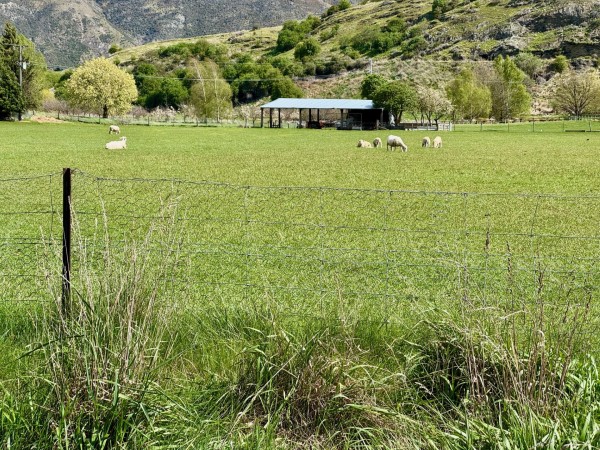
However, residents plan to defend their rural domain with what resources they can muster.
Few of them are prepared to talk openly to media. Anonymously, they’ll readily admit they’re worried about the future. Clearly, they’re alarmed by the prospect of the satellite town.
When they meet on the road they’ll talk, anonymously of course, about the chatter they’ve heard and ponder what else might be planned for Morven Ferry.
As with the growing number of communities facing the might of the Fast Track Process, some in Morven Ferry fear the future’s beyond their control. They also hold fears that if Ridgeburn proceeds, it won’t be long before the entire area is designated for growth.
In these latitudes, “You can’t stop growth” is repeated without question, like a mantra, as if it were a naturally occurring phenomenon.
The purpose of the Fast Track Process is to remove obstacles which stall growth. It’s the ‘One Stop Shop’ for fast tracking projects such as Ridgeburn.
However, there is a question, more pressing since amendments to the Act were tabled last week; “Just how much does this have to do with democracy?”
National made no secret of its intentions to promote growth in their election manifesto.
“A fast-track consents process to make it easier to build the infrastructure New Zealand needs for the future.” it says.
The fast track emphasis in the manifesto is on the provision of infrastructure, but delivery of new houses is also addressed.
“National will fix New Zealand’s housing crisis by unlocking land for housing inside and around our cities, building infrastructure, and making sure communities share in the benefits of growth.”
And that’s what people voted for.
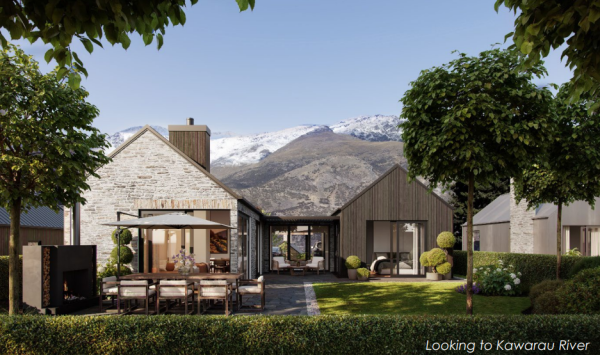
- Artist renders of the proposed development.
Last year the question of democracy was raised frequently as the Fast Track bill made its way through the House.
Professor Alexander Gillespie, of Waikato University, noted his concerns for our democracy in an article first published on May 20, 2024 in The Conversation.
He wrote of warning signs for New Zealand’s “brittle democracy” and of, what he described as, “the already widespread disquiet over the bill’s shape and intent”.
The Labour Party website, on October 18, 2024, went further with their cynicism of the Fast Track Bill saying, “National’s fast track bill enables the most radical and unbalanced consenting regime in living memory”.
Labour’s article then “crossed the floor” to quote former National MP, Simon Upton.
“As the Parliamentary Commissioner for the Environment, Rt Hon Simon Upton, said in his submission to the select committee ‘the Bill lacks many of the environmental safeguards its predecessor legislation contained. Even the much-maligned National Development Act 1979 had more checks and balances’.”
Crux contacted the three Arrowtown-Whakatipu QLDC Ccouncillors for comment on the Ridgeburn proposal.
There was no response from councillors Melissa White or Heath Copland.
New councillor, Samuel “Q” Belk is concerned Ridgeburn would impact adversely on State Highway 6’s already congested traffic flow.
Belk says, “It is serviced by a two-lane road (SH6) with no plans for upgrades, and a two lane bridge into Queenstown. The proposal would only exacerbate traffic and our already severe infrastructure deficit.”
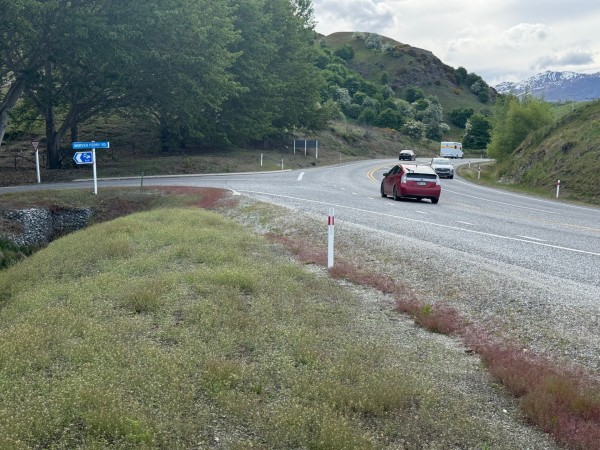
- The intersection of Morven Ferry Rd and SH6.
It’s estimated Ridgeburn will generate 8000 vehicle movements, per day.
Wastewater disposal is also a concern for Belk.
“Those who have read the proposal say that it states that the sewerage would be treated onsite and not leach into the Kawarau. 1242 homes?”
It’s unclear, if a wastewater scheme is confirmed in the Ridgeburn development, who would own it, and who would manage it.
We asked Belk about the development’s impact on the landscape?
“The Morven Ferry Rd area and Doonholme Farm typify our regions Outstanding Natural Landscape and Features. In addition, it is HPL 3 (Highly Productive Land, category 3).
“Unfortunately, the Fast Track proposal rhymes with all developments of this type: buy open land, or a farm, or an abandoned vineyard, pack a housing development onto it, sell the homes as second homes to out-of-town and offshore buyers. It’s a quick way to flip open landscape into dollars,” Belk says.
We asked councillor Niki Gladding how democratic does the Fast Track proposal look to her?
“Under a normal RMA consenting process I would have expected this proposal to be publicly notified – which would have allowed for public submissions and rights of appeal. And the decision would have to have regard to the local planning framework – into which the community had (at least some) input.
“This proposal will be processed without those democratic safeguards. But the council, including elected members individually, will have the ability to comment on the proposal. So, I’d encourage anyone with specific concerns and helpful detail to get in touch with councillors.”
No doubt further details will emerge when developers, GibbonsCo, submit their substantive application for resource consent via the Fast Track Process. From there a panel decides whether to approve the project and impose conditions.
Morven Ferry residents, in the meantime, can only apply close attention to details in GibbonsCo’s initial application, submitted for Ministerial referral a second time after addressing omissions in their initial attempt.
The initial application was unsuccessful on account of shortcomings, including consultation with iwi and Treaty obligations.
Currently, residents will have 20 days to respond to an invitation for comments once the developer’s substantive application is before the independent panel. An arrangement which may alter under the amendments to the Fast Track Process bill.
In the meantime, a media-shy local draws attention to a what he says is a discrepancy in a map included in the Ridgeburn proposal.
“The spatial plan put forward in the Fast Track application over-represents existing urban areas, and underrepresents future urban areas, in the District Plan.
“This,” the objector says, “gives the impression that new urban areas are required in the near future and that we’ve run out of zoned, developable, land.
“This would give someone with their feet under a desk in Wellington the impression that we’ve already run out of zoned land to build more housing.”
For example, the map indicates Ladies Mile development, marked in grey, is an existing urban area. However, construction of dwellings has not even commenced i.e. there are no houses as the maps suggests.

-
Fast Track application spatial plan.
The objector suggested comparison with the Fast Track spatial plan vs a current aerial photo with zoned, but as yet undeveloped, land for future housing.
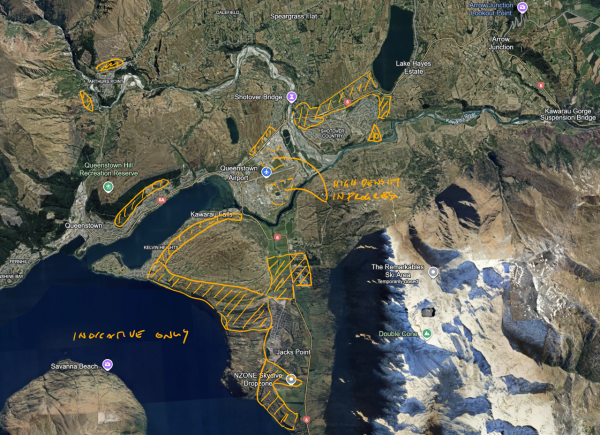
-
Future Urban areas still to be developed from district plan (or urban areas in progress). Indicative only
Of the proposed 1250 dwellings, 180 are promoted as affordable dwellings. The promise of affordable housing raises questions for former Senior Economist with the World Bank, Ralph Hanan. Hanan is sceptical of Ridgeburn’s offer of affordable housing.
“Taking a cursory look at the proposed Ridgeburn development I can only sigh - I’ve seen it all before. It is focused exclusively on an expansion of tourism and the current (and future) need for affordable housing. Also a reference to a need for mid-market housing. More tourism requires more houses and more houses invites more tourism.”
Hanan continues, “Apart from the obligatory environmental merits and attractive amenities, the only positive that I could see was the reference to developing their own wastewater treatment plant. Not to mention working with QLDC to consider an increase in the size of the plant to cater to the needs of more developments. Please excuse the sarcasm.
“The theory behind this beguiling reasoning is that we have an unfulfilled supply of affordable housing, which means that the demand for housing exceeds our supply at reasonable price points.
“The real reality is, however, that global demand for our housing has always moved faster than our supply can cope so the crossover price point goes up, not down. And so houses become unaffordable in relation to incomes in our district.”
In contrast, Queenstown Community Housing Trust chief executive Julie Scott approves of developments like Ridgeburn.
“We applaud developers bringing more one-bedroom properties to the market for sale. The likes of what Kurt Gibbons is proposing is very helpful for a good faction of the community who cannot necessarily afford a two or three-bed market property,” Scott says.
However, no matter how many additional houses built in the Queenstown region, the trust’s waiting list hasn’t decreased. The more new housing, the longer the trust’s waiting list. It currently stands at 1515 eligible households waiting for somewhere suitable to live. The highest it’s ever been.
Scott admits those on the list are unlikely to afford a Ridgeburn dwelling, which begs the question as to who are the affordable homes being built for?
As Scott says, “The price points for these are solid entry level market housing, however these would not be affordable for the bulk of people on our waiting list where the average gross household income is $81,000.”
“The concept of the homes themselves would be suitable for many, as half of our waiting list could be satisfied with a one – or two-bed unit, but there needs to be a subsidy somewhere as the numbers simply don’t stack up on a low-moderate income, unless they have a huge deposit,” Scott says.
The year-old Fast Track Process legislation, and impending amendments tabled in Parliament last week, present uncharted waters for Morven Ferry residents who wish to protect their rural lifestyle.
While they await GibbonsCo’s substantive application to the Fast Track process, they will invest time, and resources, preparing objections to the development, deciding what action to take.
Councillor Gladding, along with everyone else, awaits further details to emerge in substantive application.
“Development here would pose problems, but so does development in the Southern Corridor,” Gladding says.
“I think we need to review the detail in the substantive application and think objectively – without being too protective of our first Spatial Plan (2021). Fundamentally, we need to be enabling development in the most sensible locations - where any problems can be solved affordably, while protecting water and the wider environment.”
Whether or not councillors will have any opportunity to submit concerns to the Fast track process John Glover’s doing all he can to demystify the process for both the council and the community.
“An overview of the process depicted from start to finish in a flow chart format is nearly complete and will end up on the QLDC website Fast Track page, in due course, to provide easier to read information.
“I’ve suggested to staff that a list of Fast Track projects in our district are added to that web page with links to the relevant applications on the EPA site.”
Crux approached developer, Kurt Gibbons, of GibbonsCo, as there are many questions arising from his Ridgeburn proposal.
Gibbons has not responded to these requests.









